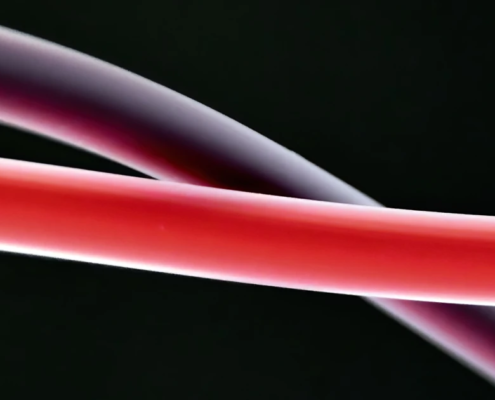
OC 949-428-4500
LA 310-460-2444
Red Light Therapy (RLT), AKA LLLT, AKA Photobiomodulation is a therapy that stimulates healing and regeneration externally as well as internally.
Externally, the skin is exposed to red and near-infrared light at very specific wavelengths, 630 – 880nm, to treat skin-related issues such as scars, wounds, and wrinkles.
Internally, it is used to improve overall cellular health and wellbeing and can be used to stimulate photosynthesizing compounds such as Methylene Blue for Photodynamic Therapy. Application of the red light can be by exposure to the skin or intravenously.
The rationale and physics underlying Red Light Therapy are not new and date back millennia. To gain a better grasp of what Red Light Therapy is, we need to take a brief dive into how we have used light, for various applications, for hundreds of years.
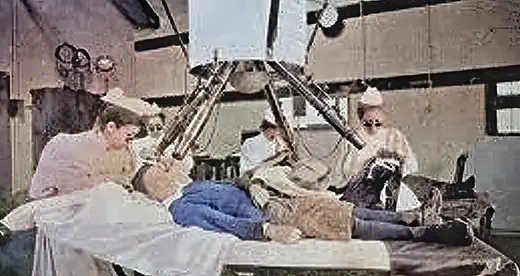
Historians believe that residents of Ancient Egypt, Rome, and Athens used various forms of light therapy. They used the sun’s light to improve overall wellbeing. Ancient Indians as early as 1500 BCE were combining their knowledge of herbs and the light from the sun to treat various skin ailments such as wounds and scabs.
Modern phototherapy, which includes Red Light Therapy, owes a debt of gratitude to Neil Finsen. Dr. Finsen was a Faroese physician who many consider to be the first to establish an artificial light source designed specifically for the goal of employing light for healing. He utilized it to treat skin illnesses like lupus vulgaris.
Light Therapy has come a long way since the early 1900s. It has been employed for a variety of purposes including food production (NASA used such a technology to grow food in space in the 1990s). Light Therapy is most known for its healing of various ailments with Red Light Therapy and other forms of Light Therapy such as LED light treatment.
Most Light Therapies are highly specific about the time and type of exposure, I.E. the wavelength of the light and the length of time one is exposed to the “therapeutic” light. This is because most modern therapies classified as light therapy involve specialized light technologies such as lasers, full-spectrum lights, LED lights, polychromatic polarize lights, or dichroic lamps. Although using these specialized lights on the skin is safe, overexposure to some of these lights can be harmful to the skin, so always choose a physician with lots of experience.
Now that you know what Red Light Therapy is and how it came to be, let’s go a step further and talk about how the technology and science work together. Then we will explore a few of the conditions that Red Light Therapy is showing impressive results on.The goal of Red Light Therapy is to expose a fair amount or a specific quantity of skin to a given wavelength of red light for a set amount of time typically from 10-60 minutes. The light enters the skin as a result of this exposure and provides therapeutic advantages by interacting with the cells internal mechanisms.
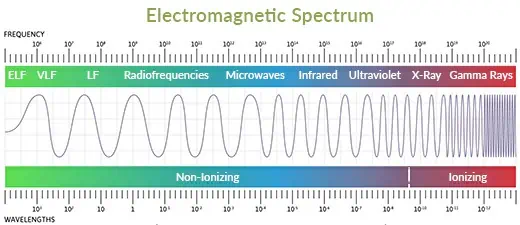
Red light is part of the electromagnetic spectrum, which includes seven electromagnetic waves:
Red light, along with other colors such as blue, violet, orange, and yellow are classified as visible light rays on this spectrum, which means it can be seen with the naked eye.
Each color within the greater visible-light-rays categorization has a unique wavelength or frequency. We use nanometers (nm) to measure these frequencies. The wavelength range of all visible light rays is 400-880 nm.
The wavelength impacts the depth at which the light can penetrate into the skin with longer wavelengths penetrating deeper than shorter wavelengths. The various “red lights” have wavelengths of 630-880 nm which means they can penetrate fairly deep into the skin. Red light is capable of reaching all layers of the skin with a penetration depth of 5 to 10 mm millimeters.

Your skin is the largest organ of the integumentary system, an important biological system. It serves as a protective barrier to keep. the bad stuff out like diseases, viruses and bacteria. It also keeps the good stuff in like your organs and fluids. It also aids in the the regulation of body temperature, and the removal of bodily waste. Your skin contains millions, if not billions, of cells.
The 30 to 50 trillion cells you have are the engines that hold you together and make your body work. Within each of those cells are the mitochondria. Trillions upon trillions of little battery like organelles your body utilizes to generate energy at the cellular level. Each of your cells has 100 to 1 million mitochondria in them.
This energy comes in the form of adenosine triphosphate (ATP), the most crucial chemical for optimal cellular health. Without it, our cells would starve and die.
Without the energy they require for cellular metabolism our bodily functions such as movement, digestion, healing, breathing, and repair would cease to work. Did you know that every single one of your cells produces 20,000 biochemical reactions every second? Imagine the energy needed to to that.
Red Light Therapy stimulates the production of ATP. It penetrates the skin and thus makes contact with billions of cells and in turn the trillions of mitochondria within them.
When Red Light Therapy stimulates ATP production, the resulting biochemical effect improves mitochondrial and cellular functionality. With increased ATP production damaged cells are now able to repair themselves. This is especially important in patients with Long COVID or who have been Vaccine Injured. The spike protein disrupts the electron transport chain shutting down ATP production.
Three key uses of Red Light Therapy are analgesia, the treatment of neurological issues, and promoting wound healing, tissue repair, and the prevention of tissue death. It is also used to reduce inflammation and edema brought on by traumas or chronic conditions.
These uses can be found in a variety of clinical contexts, including rheumatology, dentistry, dermatology, and physical therapy.From everything we’ve discussed so far about Red Light Therapy, it’s relatively easy to see why it could improve performance and muscle recovery.
To begin, exposing different layers of the skin to pure red light boosts cellular metabolism. What does this mean in terms of muscle healing and performance?
Red Light Therapy sessions increase cellular activity by stimulating the cells to produce more ATP/energy. Because the cells have access to cleaner, more efficient energy, their performance improves and they function more effectively.
Furthermore, because stimulating cells in this way improves circulation and cellular communication, Red Light Therapy can improve cellular and overall body and brain performance.
This is how it works: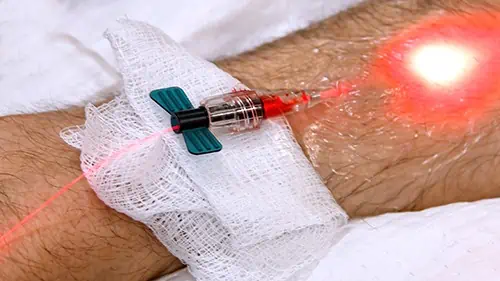
There’s a reason why top athletes and experts advocate adopting Red Light Therapy as a technique to improve physical performance, muscle growth, and recuperation time after training, it works. Red Light Therapy has been used by Olympians, NFL all-stars, NBA teams, boxers, and professional gyms due to several research studies demonstrating its effectiveness as a performance and recovery tool.
Researchers set out to determine the effect of red light and near infrared light therapy on strength training in healthy men in a 2011 study, and they discovered that combining strength training and light therapy leads to improved muscular performance and recovery, especially when compared to the test group’s results.
Red Light Therapy increases grip strength, according to a controlled study published in 2014. Researchers discovered a 52% increase in grip/hand-based exercises throughout strength training sessions in this study.
In a 2016 scientific investigation, researchers wanted to see how red light therapy sessions affected strength training in men aged 18-35. According to the study, men who participated in strength training and Red Light Therapy sessions showed enhanced mobility/torque and strength when performing leg-based activities such as leg presses and extensions. They discovered that using phototherapy before strength training sessions increases strength and is extremely useful for post-workout recovery.Given what we know about red light and near infrared light therapy, it is easy to see why Red Light Therapy would be effective for muscle recovery, strength, and performance.
Furthermore, because of its anti-oxidation effect on cells, muscle fatigue decreases, which leads to improved performance and an increase in the production of heat hormones. These hormones are critical proteins that ensure cell health and operation by protecting cells from chronic oxidation, mutations, decay, and eventual death.
Red Light Therapy also improves blood flow. When your muscles receive more blood, they perform better, can withstand more, and heal more quickly.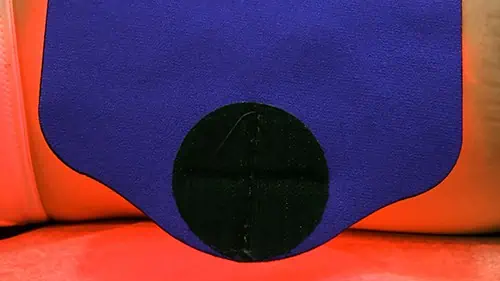
The lymphatic system, the body’s waste and poisons management system, is activated by natural and pure red light. Increased activity in this system, according to scientific evidence, decreases inflammation and swelling.
What exactly does this mean?
It means that using red light therapy for inflammation-based ailments like arthritis can be beneficial and, as various research studies have shown, highly effective because it acts on the cell nuclei, thus treating the root cause of the problem. Remember, Red Light Therapy activates your cells’ ability to create ATP, the bodies most important molecule.
Numerous studies have shown that Red Light Therapy is both safe and effective as a joint pain management system and a method of managing arthritis.TBI is the most common type of traumatic injury in the world, and an estimated 69 million people are affected by it each year. There are over 1,700,000 people examined for traumatic brain injury (TBI) per year in the United States, or three TBIs every minute.
Although near-infrared LLLT has been proposed for a number of applications, there have been few, if any, trials testing this technology on the brain, and none on TBI patients. A study on stroke victims revealed that near-infrared LLLT is neuroprotective through a mechanism mediated by specialized intracellular organelles known as mitochondria.
The only other treatment know to be effective for TBI is Hyperbaric Oxygen Therapy. The reason there are not more effective treatments is largely due to the incomplete understanding of the underlying biological pathways. Studying real people who are experiencing severe trauma is incredibly difficult.

The study also demonstrated that light has an effect on cells. Although the existence of light receptors in cells is well known, researchers still had many unanswered questions before the trial, including whether the light would pass through the scalp and skull, whether the dose was adequate, and whether it would be sufficient to engage the neural substrates necessary for TBI repair.
This work widens the scope of photomedicine’s potential applications. Transcranial LED therapy is a promising area of research, with the potential to help various brain disorders.The acceptance of Red Light Therapy and LLLT within the medical community and the general public will continue to grow as Red Light Therapy device design and manufacturing innovations take place in the years to come.
The total absence of reports of adverse events or side effects related to Red Light Therapy provides assurance for any future safety concerns.
Keep in mind that Red Light Therapy, as well as other forms of photobiomodulation, are still viewed as “alternative and complementary,”. This means that, unless told otherwise by a skilled practitioner, when treating a more serious condition Red Light Therapy should not be the only therapy.
On the clinical front, it’s also likely that public mistrust of large pharmaceutical corporations and their medications will only increase. This could be a strong motivator for people to choose therapies that were earlier viewed as “alternative and complementary,” but are now more widely acknowledged by the scientific community.
Everything on our website comes from from reputable publications, books and scientific journals, most of which are available on PubMed and other government websites. These include Meta-Analysis’, Randomized Controlled Trials, Clinical Trials, Systematic Reviews, Books and Documents. We encourage you to read the science, in order to separate fact from fiction, so that you can arrive at a full understanding of what is best for your body. We would be honored to be a part of that educational journey with you.
AMA Regenerative Medicine & Skincare | 1570 Brookhollow Dr., Santa Ana, CA 92705 | 6310 San Vicente Blvd STE 285, Los Angeles, CA, 90048 Disclaimer: though everything on our website comes directly from reputable publications and scientific journals; and though thousands of these articles are available on official government websites (https://pubmed.ncbi.nlm.nih.gov), they have not been evaluated by the Food and Drug Administration and the FDA has not certified, endorsed or approved any of the scientific findings as methods of treating or diagnosing any diseases or illnesses.